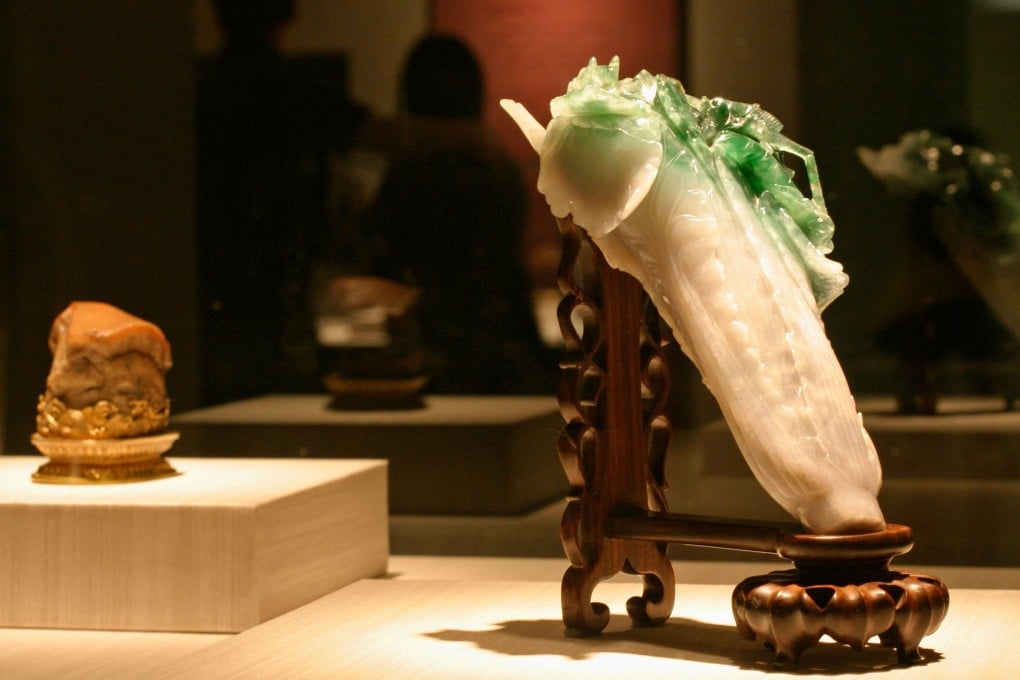China’s competing legacies on show at National Palace Museums in Beijing and Taipei
- The mid-century scramble to stop priceless art and artefacts falling into the wrong hands saw country’s collection of imperial artefacts splinter
- Nationalists transported their treasures to Taiwan, while newly minted People’s Republic allowed Forbidden City to preserve posterity

Two faces press against a glass case, mobile phones raised. The object of their interest looks like a single succulent piece of braised pork purloined from the museum cafe downstairs. Closer inspection reveals it to be a delicately carved lump of stone. Nearby resides an almost perfect stalk of bok choy (complete with a pair of insect stowaways) made of jadeite.
These two objects are among the most sought-out artefacts on display at the National Palace Museum in Taipei. While perhaps not as valuable or artistically important as other pieces in the collection, each is a perfect blend of whimsy and craftsmanship. The “meat-shaped stone” and “jade cabbage” are just two of 1,700 pieces on display, each one selected for removal from mainland China as the government of Chiang Kai-shek relocated to Taiwan in 1949.
How China’s Forbidden City became the Palace Museum
More than 1,800km away, at the other National Palace Museum, in Beijing, a mother vainly tries to make space for her young son in a heaving scrum outside the Palace of Supreme Harmony. Once the main ceremonial hall for the 24 emperors of the Ming and Qing dynasties, who ruled from the Forbidden City, today the hall is near empty.
It is an impressive building – at more than 2,300 square metres it is perhaps the largest wooden structure in China, with a floor made of “golden bricks”. These are named not for the material of which they are made but for the expensive and time-consuming process of firing and re-firing they underwent, such that each was said to be worth its weight in gold. But aside from the crowds, the place has something of an air of barren lifelessness.
A throne – but not the throne of the emperors, which was removed and then lost in the early 20th century – sits in pride of place at the centre of the cavernous room. The objets d’art and ritual vessels are gone and few treasures are on display. Visitors must peer into the space and use their imaginations – or recollections from the most recently streamed Qing dynasty costume drama – to recreate the material culture of the imperial realm.
Now both museums are facing major change. The Forbidden City is in the midst of a 10-year project to renovate and open more than 95 per cent of the palace to the public by 2025, the centennial of the Palace Museum in Beijing. The Taipei museum, which shares a pre-1949 history with its Beijing counterpart, will close most of its exhibition spaces for a three-year overhaul beginning in 2020.
